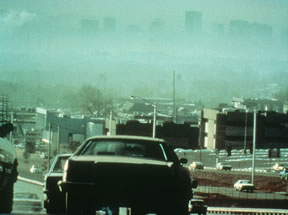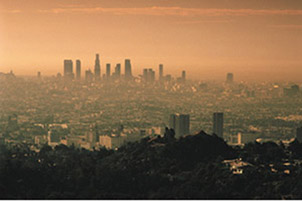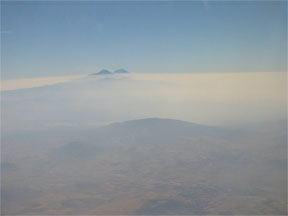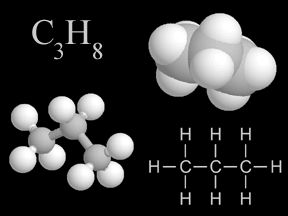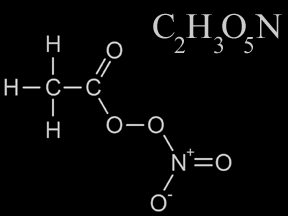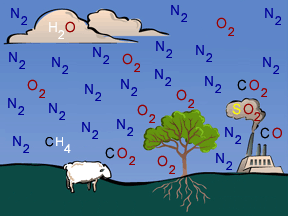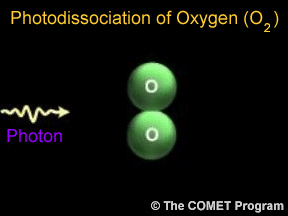Click on image for full size
UCAR
Volatile Organic Chemicals (VOCs)
Volatile Organic Compounds or VOCs are organic chemicals that easily vaporize at room temperature. They are called organic because they contain the element carbon in their molecular structures. VOCs include a very wide range of individual substances, such as hydrocarbons (like benzene and toluene), and oxygenates (which contain oxygen); they both (hydrocarbon and oxygenates) come from vehicle exhaust as well as atmospheric chemical reactions.
Fossils fuels such as gasoline and natural gas are made up of organic chemicals and their combustion is a major source of VOCs. VOCs are emitted by a wide array of products including: paints and lacquers, paint strippers, cleaning supplies, pesticides, building materials and furnishings, office equipment such as copiers and printers, correction fluids and carbonless copy paper, graphics and craft materials including glues and adhesives, permanent markers, and photographic solutions. All of these products can release organic compounds while you are using them, and, to some degree, when they are stored.
Some VOCs are quite harmful, including benzene, polycyclic aromatic hydrocarbons (PAHs) and butadiene. Benzene may increase your chances of getting leukemia. PAHs can cause cancer. Sources of butadiene include the manufacturing of synthetic rubbers, gasoline engines and cigarette smoke. Butadiene can cause cancer too.
In addition to the health problems that VOCs can cause, VOCs in the atmosphere can react with ultraviolet light and nitrogen oxides to form tropospheric ozone.


